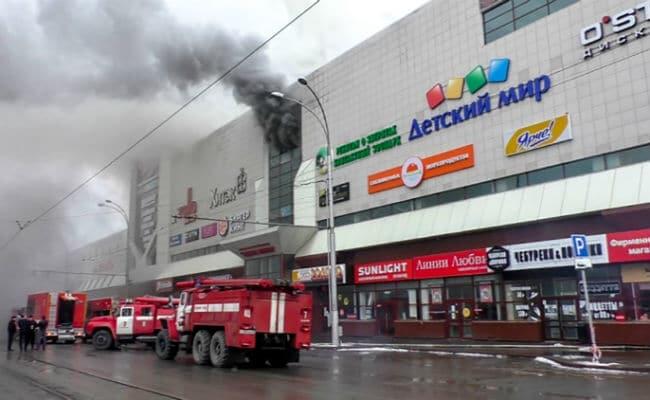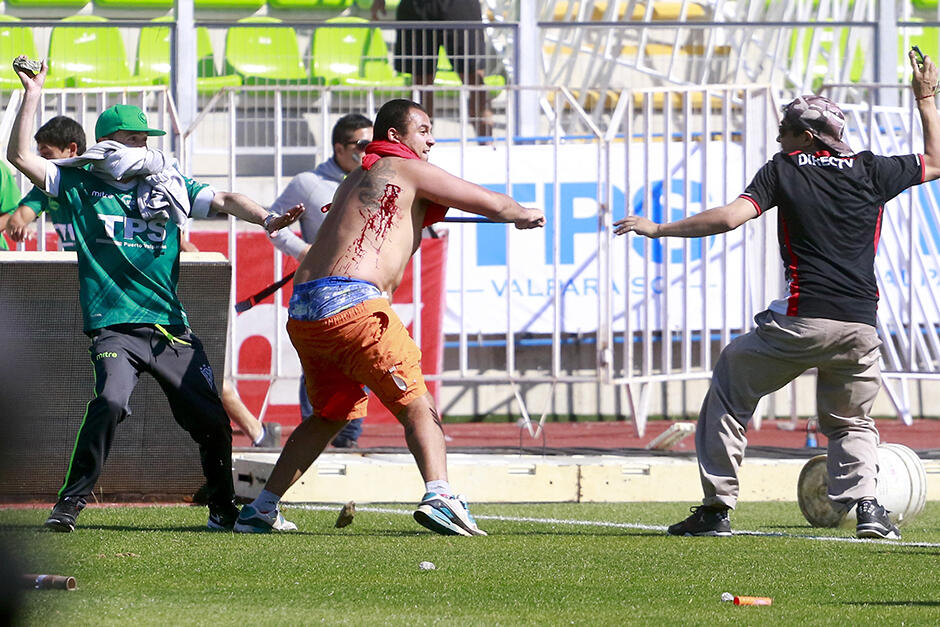Introduction
The 2022 FIFA World Cup is scheduled to take place in Qatar from November 22 to December 18, 2022 (Zimbalist 2015, 34). Various departments within the State of Qatar Ministry of Interior are under pressure to identify major risks that may affect this event and consequently develop proper mitigation plans. The activities involved and a massive number of expected visitors necessitate having a proper disaster and emergency management plan. The focus of this paper is to identify the major risks that may occur, how these risks can be managed, and the agencies that need to be involved. The document will help improve the country’s national risk register during a sensitive period when numerous foreigners are expected in major cities across the country.
Aim and Objectives
The purpose of this essay is to provide a robust plan that can be used to manage various possible disasters and emergencies while the country is hosting the 2022 FIFA World Cup. During that period, Qatar should be ready to deal with different threats (Koenig & Schultz 2016, 65). Ascertaining potential risks will facilitate drafting a proper management plan. Identifying specific stakeholders who should be involved will eliminate doubt and confusion regarding who is expected to undertake shoulder responsibilities when managing these risks.
Scope
The scope of this paper is to identify potential risks that may affect the large population expected in the country during the period surrounding the tournament, including risks that people may face in football stadiums, shopping malls, hotels, and other public places in the country. Deliberate and accidental threats will be identified to determine a comprehensive solution to the issues. The paper will not, however, discuss the security and concerns of special guests such as heads of states and top dignitaries because of the uniqueness and complex nature of the security that they need.
Risk Assessment Methodology
When assessing risks, Greenwell (2014, 54) advises that it is critical to identify the most appropriate method to make such an assessment. In this case, the researcher considered the risk-matric method to be a suitable approach for identifying and classifying risks. This method, also known as consequence-frequency matrices (CFM), uses a table that matches the frequency at which each risk can occur and the associated consequences. According to Blake and Calvert (2015, 67), this method is appropriate because it prioritizes each risk. Risk factors that are certain to occur and have catastrophic consequences must be given priority when developing mitigation plans. In comparison, rare risks with negligible consequences receive the least consideration from the emergency management team. Table 1 below shows how each risk is classified when using this model of risk assessment.
Table 1: Risk-Matrix Assessment Method.
Risk Assessment
When hosting the 2022 FIFA World Cup, Qatar will find a unique opportunity to show visitors some of its unique tourist attractions and present opportunities for global investors. However, the country will also face the challenging task of protecting visitors from various risks. The following are risk factors that should be taken seriously by various relevant government agencies within the country.
- H1: Collapse of a stadium
- H2: Terror attack
- H3: Food poisoning
- H4: Fire outbreak
- H5: Robbery
- H6: Attack by football fanatics
- H7: Slips and falls
- H8: Extreme weather
- H9: Inability of shopping malls to meet demand
- H10: Smuggling of drugs among visitors
The table below classifies each of the above risk factors to help disaster and emergency planning units understand how to assign the necessary priority.
Findings
In this section, the focus is to provide a detailed discussion of each of the risk factors identified above. It will provide historical information for each factor, current mitigation methods, lead agencies responsible, and the supporting agencies needed to ensure that the problem is solved effectively.
H1: Collapse of a Stadium
Historical information
The collapse of a stadium is a catastrophic event that may lead to the loss of many lives. In the past, such accidents have occurred in Europe, North America, parts of Asia, and Africa. The Heysel Stadium Disaster, Dallas Cowboys Practice Stadium Fail, and Hartford Stadium Collapse, shown in figure 1 below, provide some examples.
Current Mitigation Methods
The Qatar Football Association has already put measures in place to ensure that such disasters do not occur. All stadiums to be used are currently in the final stages of construction and testing.
Lead Agency
The Qatar Football Association is the lead agency in ensuring that all stadiums in the country are safe and can carry the recommended number of people.
Supporting Agencies
The supporting agencies include the Public Works Authority (Ashghal), management units for the individual stadiums, and the foreign football agencies invited to supervise the safety of the stadiums.

H2: Terror Attack
Historical Information
Terror attacks are becoming increasingly common at major events having a large attendance. The attack at the Munich Olympic Games in 1972 by Palestinian militants is one of the best-known examples of such risks. This incident is often referred to as Black September (Katz & Banaski 2018, 98).
Current Mitigation Methods
The State of Qatar Ministry of Interior has developed a raft of measures to ensure that the country will be safe from any terror attack over the period that the games will be ongoing.
Lead Agencies
The State of Qatar Ministry of Interior, through the national police, is the primary agency responsible for the security of the state.
Supporting Agencies
The Qatar Armed Forces, the intelligence agencies, and special units that may be established by the government will help enhance security.
H3: Food Poisoning
Historical Information
In March 2007, nine individuals were admitted to Hamad Medical Corporation in Qatar after eating snacks during a football event in the country. It was later established that they had eaten contaminated food during the event.
Current Mitigation Methods
The country has developed strict hygiene and other health-related measures that must be observed by various food outlets in the country to eliminate food poisoning. All food vendors must observe these policies.
Lead Agencies
The Ministry of Public Health is the lead agency in the fight against any form of food contamination in the country.
Supporting Agencies
The ministry will be supported by law enforcement agencies such as the police and municipal council of Qatar officials.
H4: Fire Outbreak
Historical Information
Fire outbreaks in shopping malls are becoming common. In November 2013, the Nakumat Mall, one of the leading shopping centers in Nairobi, suffered a fire outbreak that left 15 people dead and several others injured (Pine 2018, 45).
Current Mitigation Methods
The fire department has already ordered several fire engines, like those shown in figure 2 below, to help improve the ability to respond to fire outbreaks. More officers have also been trained.
Lead Agencies
The Doha Fire Station is the lead agency responsible for dealing with cases of fire outbreaks in the country.
Supporting Agencies
Management units of stadiums or shopping malls affected by the fire can assist the department. Paramedics and law enforcement agencies may also be needed.

H5: Robbery
Historical Information
The FIFA World Cup 2014, which was held in Brazil, was marred by rampant cases of robbery and wanton attacks on visitors. Such incidents are common at major sporting events.
Current Mitigation Methods
The government has put measures in place to ensure that cases of robbery and other armed criminal acts are dealt with promptly. Such incidents are rare.
Lead Agencies
The State of Qatar Ministry of Interior has the primary responsibility of combating cases of robbery and other armed violence.
Supporting Agencies
The intelligence agencies can help identify criminal gangs in the country with the motivation to rob locals and visitors in various social settings.
H6: Attack by Football Fanatics
Historical Information
Cases, where football fans attack one another, have been witnessed in the past. In the 2010 FIFA World Cup in South Africa, such cases were reported in Johannesburg (Pine 2018, 93). Figure 3 below shows a physical altercation among fans.
Current Mitigation Methods
The country has yet to develop mechanisms for dealing with such incidents. A proper solution will require multi-state involvement given that some fans may not be Qatari nationals.
Lead Agencies
FIFA is the lead agency responsible for dealing with clashes between teams, especially if they are from different countries.
Supporting Agencies
Individual countries have the responsibility of ensuring that they promote peaceful participation in the events. The police may be invited to help deal with cases of violence.

H7: Slips and Falls
Historical Information
Cases of slips and falls in football stadiums and shopping malls can be common. Casavant and Philpott (2016, 42) advise that to deal with such problems, it may be necessary to improve the texture of floors and introduce appropriate metal bars to enhance safety.
Current Mitigation Methods
The country’s Qatar Football Association is currently working on various stadiums to increase their capacity and meet safety requirements. Many shopping malls are also improving their facilities.
Lead Agencies
The country’s Football Stadium Federation has the primary responsibility of enhancing stadium safety. Management personnel for different malls is also responsible for enhancing the safety of their facilities.
Supporting Agencies
The management of individual football stadiums will have the responsibility of working closely with the Football Stadium Federation to address safety concerns.
H8: Extreme Weather
Historical Information
Extreme weather conditions such as high temperatures, extreme winds, or torrential rainfall may be dangerous. In August 2011, Hurricane Irene, which affected City Field, proved dangerous.
Current Mitigation Methods
Weather conditions may not be easy to predict. However, the government has taken measures to deal with issues such as strong winds and heavy downpours during tournaments.
Lead Agencies
The Football Stadium Federation has the mandate of ensuring that structures and different facilities are secure in the event of extreme weather conditions.
Supporting Agencies
The meteorological department will also help by predicting weather conditions. Various emergency response teams may be invited to deal with the results of natural disasters.
H9: Inability of the Shopping Malls to Meet the Demand
Historical Information
The large population expected in the country may overwhelm local shopping malls. Such occurrences were witnessed in the 2010 FIFA World Cup in South Africa (Pine 2018, 78).
Current Mitigation Methods
Large shopping malls in the country are currently working to expand their facilities in anticipation of a large number of visitors.
Lead Agencies
The management units of individual shopping malls are responsible to meet the needs of the expected volume of customers.
Supporting Agencies
Owners of grocery stores and other retailers are responsible to have adequate stock in their stores.
H10: Smuggling of Drugs Among Visitors
Historical Information
Drug smuggling was one of the main problems that Brazil faced during the 2014 FIFA World Cup (Pine 2018, 112). Relaxed immigration rules make it easy for people to smuggle large quantities of drugs into the country.
Current Mitigation Methods
The police department is currently working with intelligence agencies to find effective ways to deal with the problem.
Lead Agencies
The national police unit is the lead agency responsible for fighting the problem in the country.
Supporting Agencies
The local and international intelligence agencies can help by providing relevant information needed to address the problem.
Conclusion
Qatar is preparing to host the 2022 FIFA World Cup. Massive infrastructure development has been witnessed over the past several years, and it has been reported that the construction and renovation of most of the stadiums that will be used are complete. However, it is necessary to ensure that proper plans are established to deal with a variety of different risks that may emerge. The risks identified in this paper are important and should be included in the future National Risk Register for the State of Qatar because they have been witnessed in the past and have the potential to happen in the country.
Reference List
Alexander, D 2016, How to write an emergency plan, Dunedin Academic Press, Edinburgh.
Blake H, & Calvert, J 2015, The ugly game: the corruption of FIFA and the Qatari plot to buy the world cup, Simon & Schuster, New York, NY.
Borchers, U, Gray, J & Thompson, C 2013, Water Contamination emergencies: managing the threats, Cambridge University Press, Cambridge.
Casavant, D & Philpott, D 2016, Emergency preparedness: a safety planning guide for people, property, and business continuity, Bernan Press, Lanham, MA.
Dunmore, T & Donaldson, 2015, Encyclopedia of the FIFA world cup, Rowman & Littlefield, Lanham, MD.
Greenwell, C 2014, Managing sport events, Human Kinetics, Ontario.
Katz, R & Banaski, J 2018, Essentials of public health preparedness and emergency management, Jones & Bartlett Learning, Burlington, MA.
Koenig, K & Schultz, C (eds.) 2016, Koenig and Schultz’s disaster medicine: comprehensive principles and practices, Cambridge University Press, Cambridge
Pine, J 2018, Technology and emergency management, Wiley & Sons Publishers, Hoboken, NJ.
Zimbalist, A 2015, Circus maximus: the economic gamble behind hosting the Olympics and the world cup, Brookings Institute, Washington, DC.